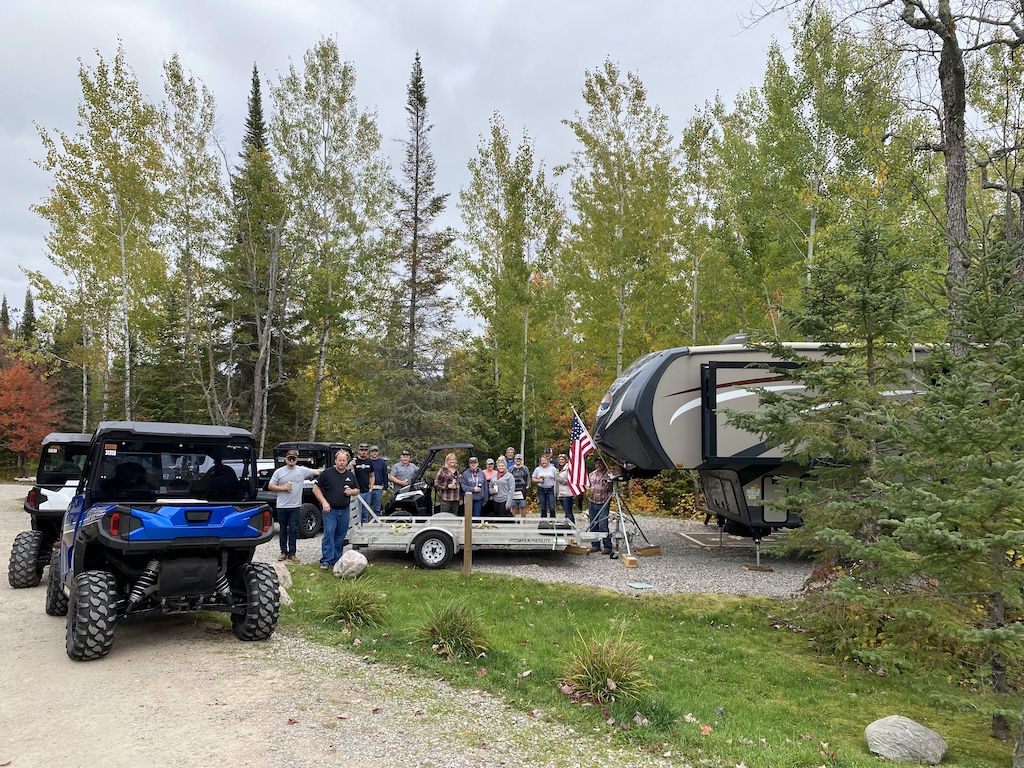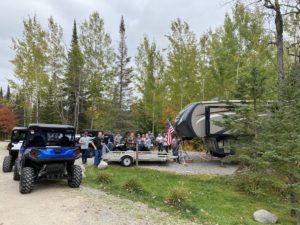
 The RV camping season is just getting started, so now is a good time to review the most common and uncommon mistakes that people make when setting up their campground.
The RV camping season is just getting started, so now is a good time to review the most common and uncommon mistakes that people make when setting up their campground.
MISTAKES IN RV SETUP OUTSIDE
When backing up or maneuvering the RV, either walkie talkies or cell phones are advised to use. When parking your RV, yelling at each other isn’t the most effective way to communicate. And, in a similar vein, being sidetracked by fellow campers who want to converse even before you’ve parked…yes, it’s happened to us before. Tell others that you need to concentrate on parking and setting up the RV first, and then you’ll have time to talk.
Parking is reasonably near to the RV hookups. Are you as close to the water, electric, and sewer hookups as you want to be before turning off your engine or unhooking the RV? Are your windows positioned to provide the view you desire?
Parking too close to trees or other obstructions is not a good idea. Check for space for your RV slides to come out or steps to fold down all the way around the RV.
Parking on an uneven surface. Is your campsite’s most level area where you’re parked? Check with a level. Even though you may have a automated leveling system, we’ve seen it recommended that we manually level with blocks of wood first before using the automatic leveling system.
Your RV is not leveled evenly. It’s not only inconvenient to walk around in your RV, but it can also effect how your refrigerator cools, how your slides work, and so on. To finish the job, use leveling blocks or wood (or use a leveling system).
Getting sidetracked or distracted while setting up and neglecting to chock the wheels, unhook the electrical line from your tow vehicle, and so on. We’ve already discussed it, but being distracted during RV setup is arguably the most common source of all RV setup errors!
All of the propane is turned on. We recommend turning on only one tank at a time, so that when the empty one runs out, you can simply turn on the full one and return to the store for a refill. And for some reason, your propane always appears to run out late at night or at the most inopportune time. A simple propane gauge is also useful in this situation.
Leaving your awning out in the open (as shown below) and allowing the wind to wreck havoc with it. Make sure you bring your awning in at night or when you leave your RV unless you have very tight tie downs. You never know when a burst of wind or a strange storm will come through and turn your awning into a sail.
The convection oven/microwave vent flap is not unlatched. An RV technician claims that leaving the flap closed can cause your convection oven/microwave to burn out.
MISTAKES IN RV SETUP ON THE INSIDE
Not aware that objects shift around and slide forward inside your RV while moving. Inside cabinets, you can utilize small tension rods or simply open them slowly. The same may be said about your medication cabinet and refrigerator.
Liquids that expand or explode! Shampoo, soap, and other sealed liquids expand and contract as you move due to changes in height and temperature.
It’s raining and you’ve left a roof vent open or on. A rain sensor or a cover over the vent in some contemporary RVs avoids this. If you don’t have one, make sure the vent is closed before leaving or going to bed.
Leaving the windows of your RV open at night. Close the shades at night if you don’t want to put on a display. Even if your RV windows are tinted, they won’t help you much in the dark.
Allowing your pilot light to go out is a bad idea. Allowing the pilot light on your stove/oven to go out could allow your RV to fill with propane, which is bad!
MISTAKES IN RV ELECTRICAL SETUP
Lacking the necessary electrical adaptors to properly connect your RV to the power pedestal. Make sure you know the difference between 15 amp, 30 amp, and 50 amp RV electrical hookups, as well as what each one will power in your RV. You don’t want to keep tripping circuit breakers because it’s terrible for them and dangerous for your RV appliances.
Lack of an extension or a long enough electrical cable. Despite the fact that we have a long 50 amp electrical connection, we still need to use a 10′ extension that we bring on many RV travels.
Not having a surge protector is a big no-no. Before connecting your RV, double-check for correct wiring and power.
Bad electricity is a common occurrence at RV parks and campsites, and it can harm your RV equipment!
With the breaker turned on, plugging a power cord into your RV! DON’T EVEN THINK ABOUT IT! Before plugging in your RV, make sure the breaker on the power pedestal is turned off, then turn it back on.

Recent Comments